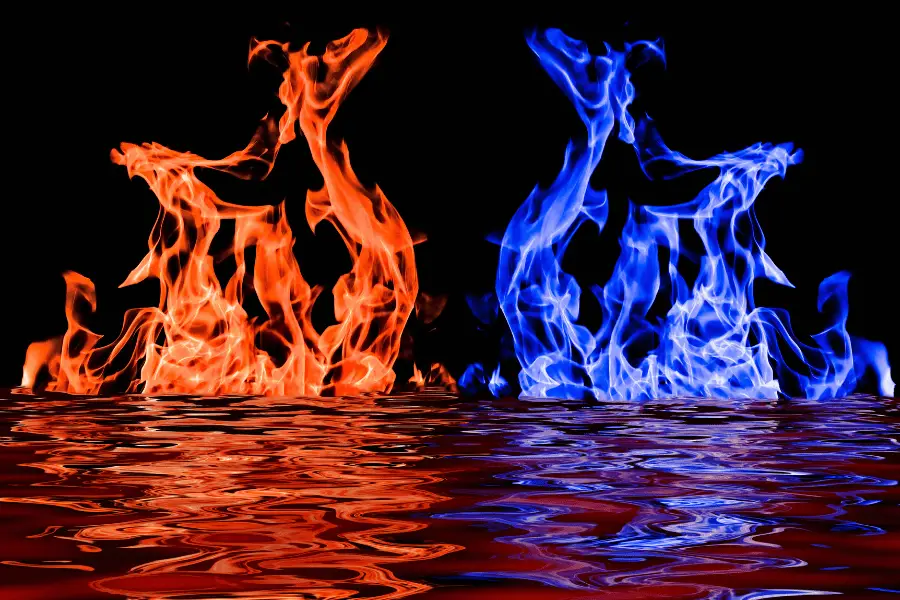When a pet dies it can be a hard time for you and for everyone that loved your animal. After your pet dies the next step is that you have to do something with its remains and you have a few options like water cremation? What is water cremation for pets and is it right for you?
Water cremation, also known as alkaline hydrolysis or flameless cremation is the process of breaking down the remains of a pet with water and alkaline chemicals. The remains are placed into a chamber then filled up and heated to around 350 ℉. This breaks it down similarly to traditional cremation.
This is not a new type of cremation and has been around for a long time, since the late 1800s. Yet, most people have not heard about it and even less know how it works.
You can read on to learn more about it and if it is right for you and your pet.

What is the actual process consist of?
Each business that does water cremations will be slightly different from other ones as they may use different chemical compounds and types of chambers. For the most part, it is all quite similar and highly regulated.
- The process will start with placing your pet’s body into a pressurized stainless steel chamber. Some places will put the corpse in a special sealed bag called a containment bag, which then goes into the chamber as well.
- The chamber will then be filled with 90% to 95% water and the rest will be an alkaline chemical solution. The two most common chemicals that are used will be potassium hydroxide or sodium hydroxide. They can be used alone or in combination with one another.
- The solution-filled chamber will then be heated to between 300℉ and 350 ℉.
- This combination of pressure and chemicals speed up the decomposition of the body. It breaks down the chemical bonds in the body. This process is called hydrolysis. The heat acts as a catalyst to speed it up.
- The process takes about the same amount of time as a traditional cremation. Which is 2-4 hours, depending on the size of the corpse.
- After the body is totally broken down, the water and solutions are then drained from the chamber.
- The leftover liquid is a combination of amino acids, peptides, sugars, and salts. You have a few options of what yo do with the water.
- It can be filtered and purified, then returned to use as normal or to be used again for another water cremation.
- The water is sterile and actually can be safely disposed of by draining it down into the sewage system. It is no more harmful than toilet waste, but many areas will not allow this.
- After the fluid is drained the remains of the body will be bone fragments and a white ash. It will appear to look like cooking flour and there are usually more and larger pieces of bone fragments. The ash and bone fragments which are more than a traditional cremation can be pulverized as it would be normal for a traditional cremation.
- You can receive the ashes back in a container that you provided or have bought from the crematorium. They also usually have options to dispose of the cremated remains for you by local laws if you so choose.
What are the benefits of water cremation?
Water cremation is actually better for the environment and takes up fewer resources. There are a variety of benefits even though it is not as widespread as traditional cremation.
For different reasons, I will go over later why it is not more widespread.
- The carbon footprint is far less as there are almost no resources used besides in the creation of the facility.
- The amount of natural gas to heat up the water and solution is around 90% less as the temperature you are heating the water to is 350 degrees not almost 2000 for a traditional cremation.
- There is also very little carbon dioxide emissions released. Since the remains are not burnt and the only emissions are from the heating of the chamber.
- You will also get around a quarter more of your pet’s ashes as they aren’t released to into the air or stuck in the chamber.
- In a traditional cremation surprisingly there is mercury that is released into the environment. With water cremation there is none.
How much does animal Aquamation cost?
Water cremation for pets will cost on average $1-$8 per pound for communal cremation of pets weighing 25 pounds or more. Private cremation of similar-sized pets can cost $2-$9. Pets weighing less than 25 pounds will cost proportionally more in both mass and individual cremation, from $50-$225 depending on the venue.
| Weight | Private Cremation | Communal Cremation |
|---|---|---|
| 0-49 lb (0-22 kg) | $90-$225 | $50-$75 |
| 50-99 lb (23-44 kg) | $175-$300 | $75-$100 |
| 100-149 lb (45-68 kg) | $200 -$400 | $100-$150 |
| 150+ lb (69+ kg) | $200-$500* | $200* |
source source
The average cost for water cremation ranges between
$1 and $9
per pound
Even with all the benefits and the lower overhead, it is still about the same price as a traditional cremation.
The biggest reason for this is that you have to purchase the actual machine and chamber which can be anywhere from $70,000 to $500,000 for a high-end model.
As time goes on more companies are making these and the water cremation is more mainstream the price will come down drastically as the upkeep and the environmental impact if much better for business and the environment.
They are also making smaller chambers that are just for pets such as cats and dogs that will be much cheaper and this price reduction will hopefully be passed along to the customer.
As with regular cremations, companies are starting to communal burials and people can split the costs. With containment bags, this can be even easier for people to get their own pets remains and not other ones as well but save on the costs.
The average cost of a water cremation for small pets around 20lbs is $150 and up to $400 for larger animals around 100lbs.
Other things that can cost you are the pickup of your pet’s remains which is around $100 depending on the size of the pet. If you do not want to go to the cremation center, they can deliver the ashes back by hand or mail for the same price.
Top Tip: Try working with a smaller company as they seem to be much cheaper through the research that I have done.
If you want to pick up a quality urn or memorial for your beloved pet I would really recommend OneWorld Memorial which offers a wide range of products for both pet and human memorials. I was personally very happy with an urn I bought from them recently.
Another great option is to get the ashes made into a permanent piece of jewelry, you should check out the beautiful handcrafted pieces Mark Hamilton makes with cremains by visiting his site here.
Where can I find a water cremation office?
As you have read even though the process is actually very simple and it can be used for humans and pets alike. For legal reasons, it is more commonly used for dogs and cats.
The reason for this is that it not allowed to be used for humans in most of the states in the US. Each year more and more states and people are learning about its benefits and thinking twice about the more sustainable, eco-friendly alternative to traditional cremation.
Minnesota was the first state to legalize it in 2003. It is now legal in 20 states for humans and even more for pets. It is under legislative review in at least another 10 states. To see if it is legal in your state check here.
What animals can be water cremated?
Most every animal can be cremated this way dogs, cats, hamsters, parrots, exotic species, etc. The issue usually comes in with the size and weight under 300 pounds is usually the limit so horses and other large animals cannot fit into the chamber.
This is one of the few disadvantages, as with fire cremation there is usually a crematorium that can suit the needs of a large pet.
Why is it not legal everywhere?
There are a few reasons that it is not legal in all and more widely adopted in all states. Even though it should be legal in most of the states, within the next 10 years, here are a few of the main reasons that it is not legal in all states now.
The Concept- People seem to be uneasy with the nature of the process as it is liquid and not fire, even though it is the same concept. The most logical and probable reason for its bad reputation is that most people do not understand what is happening and are misinformed.
Bad Articles/Hit Pieces – People are more afraid of fire than liquid but are more uneasy about liquids. You will read other articles on the internet about it as a “viscous liquid” and the body is “liquefied”, while I only spoke about the remains above, others focus on the leftover liquid.
They will say that the leftover liquid is syrupy and smells putrid and of ammonia. Also, these focus on that it is disposed of through the sewage system which some make it sound like that is where their loved one is going.
These articles tend to be written by funeral directors or religious figures.
Religion– Religion is playing one of the largest roles in delaying the progress of water cremation. Most major religious organizations have stated that is disrespectful to the body.
This is the same thing that happened with traditional cremation back in the 1960s. But now even the catholic church is not against fire cremations.
Lobbyists– To get laws passed and get them in front of courts you need sadly need lobbyists in the states.
The funeral and religious lobbyists are very large and well funded in the US and especially in the southern states where this is having the biggest resistance.





